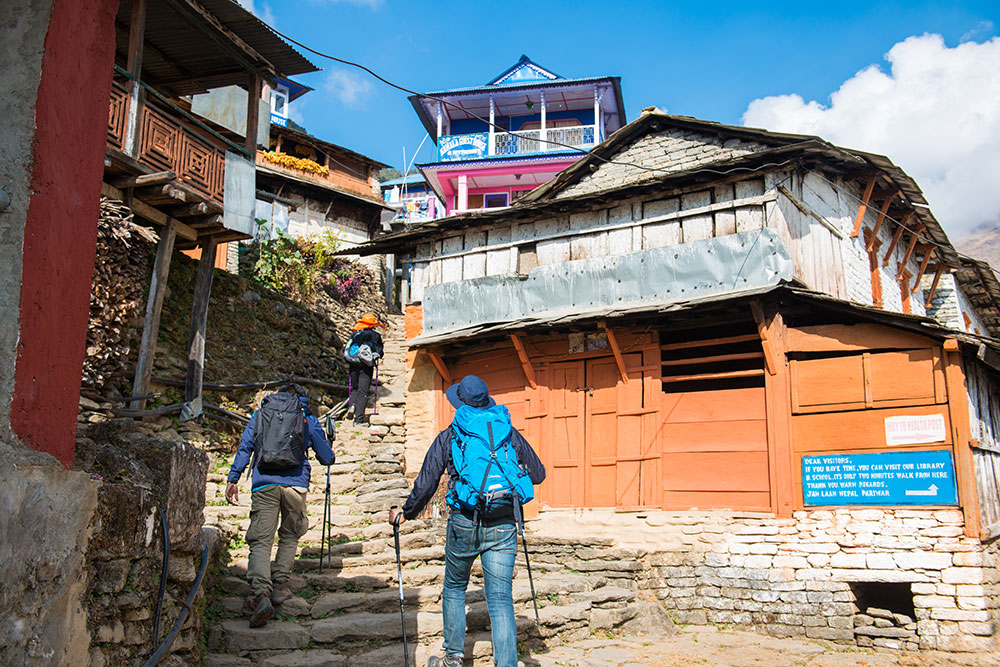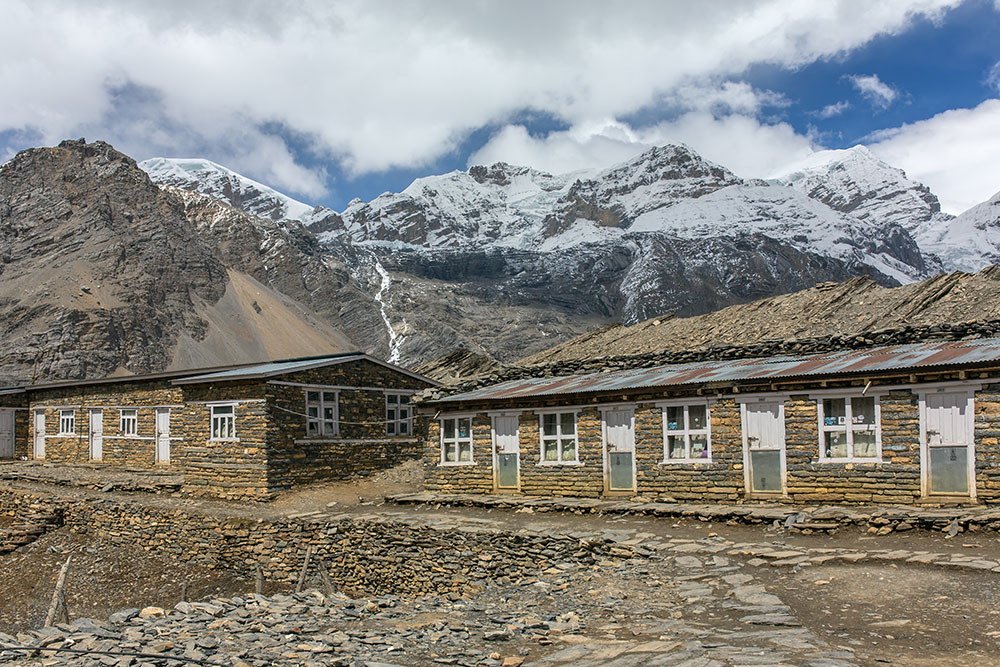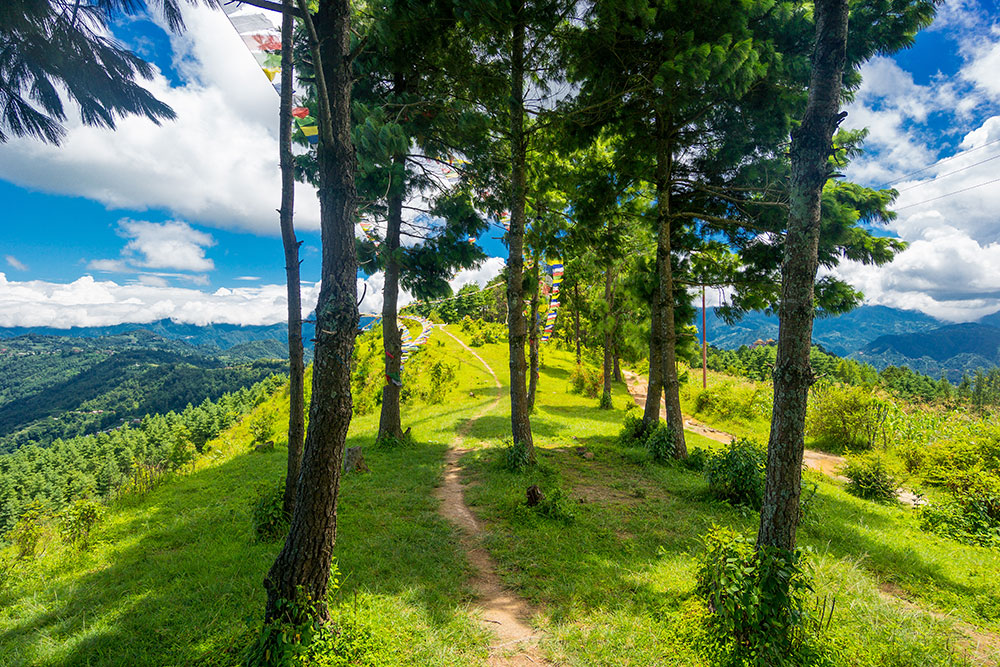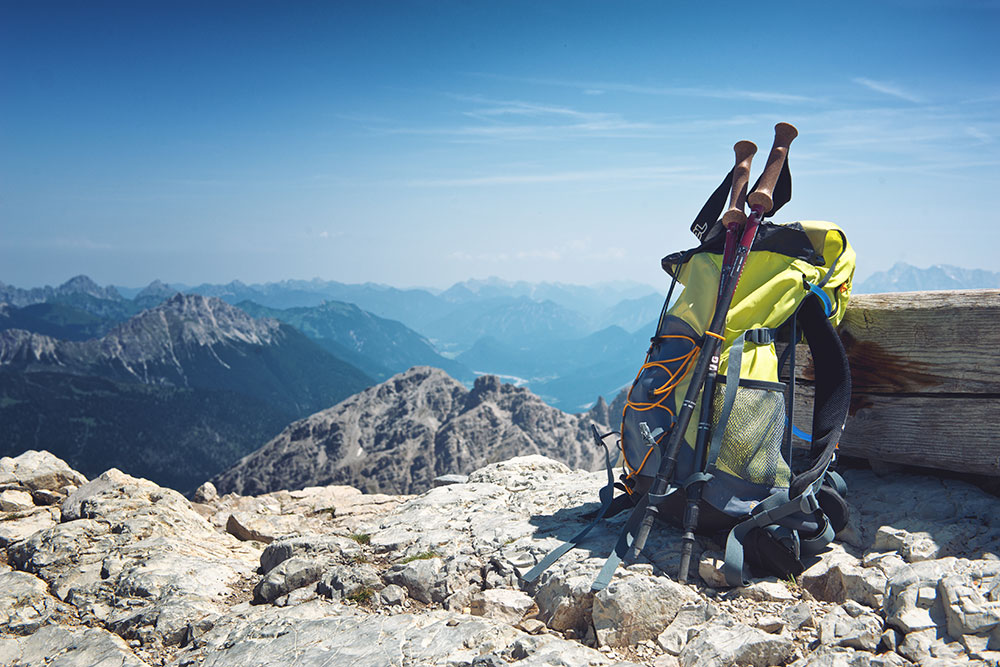Envy. That’s the gut-punch you feel when someone you know gloats about having been on a Nepal trekking tour. It’s a rite of passage, off the beaten track, into another world and time, and one that you need to be uber-fit to tackle. Among its spiritual and cultural draw, part of the appeal of Nepal is the 14 mighty mountain peaks above 8,000 metres.
When it comes to taking on a trek in Nepal, there are plenty of options to trek solo, in a group or with your family. Our Local Designers in Nepal are experts when it comes to building trips that are unique to your budget, interests and travel style. No matter what your aim, budget, or available time, here are some basic tips you’ll need to follow to make your Nepal trek one that you will never forget.
Before we dive in, we are assuming that you’re already entranced by the natural beauty of Nepal so we’re not going to detail the sights, sounds, fragrances and step-by-step vistas. This blog contains everything you need to know about how to plan your Nepal trek, the must-visit sites that will help you, and how to get up-to-date information about the treks. It’s an ever-changing landscape – Nepal in a nutshell.
Post Contents
Planning Your Nepal Trekking Tour
Your first port of call is to visit a travel advisory service or your government’s website and head to the information about Nepal, such as the Australian government’s Smart Traveller website, backed by the Department of Foreign Affairs and Trade. This is where you’ll find out about visa requirements, entry requirements and more.
When to Plan Your Nepal Trip
Monsoon season is from June to August and in short, it’s best to avoid that time of year, beware it can rain anytime. According to our Local Designers in Nepal, the optimum travel periods are mid-September to end of November, then from mid-March to the end of May. To get a feel for the weather in Kathmandu, for example, you can head to this site. There’s a high risk of landslides particularly on major roads in and around all trekking areas.
For a lowdown on the best time to visit Nepal depending on where you’d like to travel and what you’d like to do whilst there, check out our Nepal travel guide.
Visas & More
Depending on where you’re coming from, you may or may not need a visa to enter Nepal. For example, Australian citizens need a visa, but they can get a tourist visa when they arrive. Be mindful of visa and other entry and exit rules –including how much cash you can bring in, other customs and quarantine issues– as these can change. When building your trip with Designer Journeys, your Local Designer can advise on the best time to go, which visa you’ll need and accommodate other entry and exit requirements in the planning stages of your trip.

Vaccinations Needed for Nepal
It is highly recommended that you contact a doctor or health clinic eight weeks before your trip to chat about your travel plans and health implications. The World Health Organisation lists Yellow Fever, Malaria and polio as the vaccinations you need to worry about in Nepal and depending on the countries you’ve visited or lived in before you get there. Check the website when planning your trip and get in touch with your doctor.
Planning a Nepal Trekking Trip?
Take all of the hassle out of planning the trip yourself and connect with one of our Local Designers in Nepal who will use their decades of trekking experience, local insight and expert knowledge to build your perfect trip!
Health Risks to Consider
Even if you have been vaccinated against particular diseases, there are still health risks once you land. In winter, some towns including Kathmandu have high levels of smog and heavy particulate pollution. You can keep an eye on the real-time air quality in Nepal using this link and ask your Local Designer about the best times to visit to avoid these conditions.
Concerned about altitude sickness? It can kick in at above 2,500 metres above sea level. It’s life-threatening, so take it seriously. You’re at greater risk if you’ve been afflicted with it before, or have just exercised or drunk alcohol before doing the trek. If high altitude is too risky for you, there are low altitude walks that are just as beautiful and rewarding. If altitude sickness is something you are wary of, your Local Designer can advise on which routes would be best for your Nepal trekking experience when planning your trip.
Now, Let’s Plan Your Nepal Trek!
First Things First, Maps.
It’s much easier to visualise your goal to make it happen, so we’ll start at maps. These will give you an insight into the difficulty of the trek or treks you’re hoping to tackle. The Longest Way Home is a great resource linking Google Maps with short treks (two to five days), medium (five to 12), long (more than 12 days) and rarer treks so that you can visual the trek over the number of days.
For the ultimate travel inspiration, local insight straight from our expert Local Designers and exclusive offers you won’t find anywhere else from Designer Journeys, sign up today! Don’t miss out.
Don’t Miss Our Exclusive Offers! Subscribe Today!
How to Plan Your Nepal Trekking Tour with our Local Designers
Planning a tour of Nepal is no easy feast, especially if you are looking to enrich your visit with authentic, local experiences and short, medium or long treks that you may have in mind. Our Local Designers in Nepal take the hassle out of coordinating all the moving parts when planning your trip. They’ll organise all of your accommodation, experiences, trekking permits, porters, guides and more, all in an extraordinary personalised itinerary that meets your budget, travel style and interests. It’s couldn’t make more sense!
Does a 20-day trek sound like you? That means you may want the ever-popular Annapurna Circuit or Everest Base Camp on your itinerary. You could try this 16-day Everest Base Camp Trek or perhaps this trek to Annapurna Base Camp, both of which can be personalized to you by our Local Designers on the ground. If you‘re after luxury accommodation and looking to tick five-star hotels in Kathmandu and hotel-style lodges en route to cross Annapurna and Everest off your ‘bucket list’, then you can customise this luxury Kathmandu tour to suit you! Nepal’s famous network of teahouses will give you a roof over your head and scrumptious home-cooked meals daily for your trek even in sub-zero temperatures, according to Elite Daily.

Maybe the road less travelled appeals to you. How about the ninth highest altitude wetland in the world, Panch Pokhai, in Nepal’s Sindhupalchok district. You’ll have five sacred Hindu holy lakes to drool over. But on the downside, the route has no sheltering places. You could also try Tsho Rolpa Lak Trail, linked to Yeti tales and also one of Nepal’s largest glacial lakes. if any of this appeals, you can design your own trip to Nepal from scratch by answering a few questions, letting us know what you’re looking for and our Local Designers in Nepal will do the rest!
Those keen to trek at a lower altitude can still ‘do’ Nepal; just opt for the often-overlooked area of Langtang Valley, close to Kathmandu Valley. You can connect with a Local Designer to customise this unique trek into the Langtang Valley to Kyanjin Kompa for a view into Tibet. Described as a moderate trek, it will take you through waterfalls, forests of rhododendron and bamboo and nudge close to the Himalayan snowy peaks. It may be at a low altitude, but it will be just as scenic and rewarding.
Affordable, Shorter Treks
Fancy a last-minute trek to Everest Base Camp, a taste of Annapurna or any of the other incredible places to explore in Nepal? Our Local Designers will be able to design an itinerary perfectly suited to your budget, travel style and interests that you simply can’t refuse!
Explore our Gallery of Nepal Trekking Tours!
There are so many wonderful experiences that await you. Each of our Nepal tours can be customised to suit you by our trusted Local Designers at Designer Journeys. They will use their expert knowledge and local insight to design your dream trip! Explore our gallery of trekking trips below and begin your journey.
Taking the Family
Where better to connect with your family than Nepal?
Even for folks who’ve never trekked before, our Local Designers offer tours for families with young children that take you in Kathmandu Valley, Pokhara and treks in Annapurna and Everest areas as well as the wildlife safari at Chitwan National Park. That park is home to 68 mammal species, 544 bird species, plus renowned for its protection of One Horned Rhinos, Royal Bengal Tigers and Gharial Crocodiles.
How about checking out the world’s longest zipline? As long as the kids weigh more than 35kg (and adults under 125kg), it’s a go-er at a whopping maximum speed of 120 kmph. The ride courses 1.8 kilometres and dips 610 metres. It starts at the small village of Sarangkot and takes in the city of Pokhara. There’s even a butterfly farm nearby, too.

Trekking Tips
Set your own pace, keep warm, protected, hydrated, fed and don’t go off route are the mainstays of a successful Nepal trek. Book through a registered and reputable trekking operator like our vetted Local Designers in Nepal, but be aware you’ll need Nepalese Rupees for wifi, hot water, bottled water, charging your battery, plus tips for your porter and others. Oh, and dirty washing won’t dry in the sub-zero temps, so pack lots of extra clothing! We’ll get more on to what to pack a little further down.
Securing your Permit
Anyone aged over 10 who treks Nepal –whether solo in a group– needs a permit, a Trekkers Information Management System (TIMS) card, before they enter the area. It carries your personal details, where you’re trekking, with which company and for how long. The idea is to carry it with your passport and travel insurance certificate. To get a TIMS card, have a copy of your passport and two passport-sized photos available for your Local Designer once you get to Nepal – either in Kathmandu or Pokhara. If you are unsure about this process, don’t worry, our Local Designers in Nepal can talk you through everything you need to know and prepare and throughout your trip, you’ll have on-the-ground support.
What to Pack
You’ll definitely need a checklist. Don’t bring everything with you as there are well-stocked big-brand name shops in Nepal. For starters, you’ll need a sturdy waterproof backpack, which you or your porter will carry, plus a day pack, just as robust. The big rucksack should hold about 45 litres if you’re taking a sleeping bag; 30 litres if not.
The key to your trip is fit-for-purpose shoes – lightweight hiking boots you’ve broken in before the trip, lightweight closed-in rubber shoes for night walks or showers plus a pair of normal trainers.
A down jacket, you can punch into a tiny bag, will be your best travel buddy, plus a suite of quick-dry synthetic shirts and trousers, a waterproof jacket (maybe waterproof trousers if you’re touring during the monsoon season), gaiters, thick socks, comfy clothes for overnight, one or two telescopic trekking poles per person to ease knee strain, a sunhat, light cotton scarf, sunscreen, woollen hat, gloves and scarf. You’ll also need wet wipes (if you want to avoid the cold showers), tissues, toilet paper (few trekking lodges will supply them), a water bottle, head torch, quick-dry towel and sample-size toiletries.

Add to your list a camera, penknife (not for your flight carry-on luggage), an all-seasons sleeping bag (to a minimum of -15C) with cotton or silk liner, a money belt, earplugs, a lighter, and a personal first aid kit. In that kit, you’d want your prescriptions drugs, if any, antibiotics to combat respiratory problems, medicines to tackle gastro bugs and altitude sickness (such as Diamox), plasters, bandages, disinfectant, antiseptic and antibiotic cream and water purifying tablets.
What about equipment, particularly if you’re roughing it? Sustain yourself while trekking with snacks such as energy bars and chocolates you’ve lugged from the bigger cities rather than buy en route.
Whilst the list above sounds comprehensive, remember you can only carry 15kg per person in combined luggage to fly from Kathmandu to Lukla, if you plan on going near Everest, so you’ll want to wear your gear on the plane to lighten your load.
While You’re Waiting, Join a Virtual Community
Once you’ve booked your trip, sit back and join a virtual community of Nepali trekkers. Follow Facebook groups such as NepaliTravellers, Fellow Traveller Nepal (actually a social enterprise that helps matches volunteers to placements) or to get up-to-the-minute info on the hottest Nepali Facebook page, visit Social Bakers.
Ready to Design Your Nepal Trekking Tour?
Now you are filled with tips, there’s no time to wait, the exciting opportunity to experience the trekking capital of the world awaits! Explore our gallery of fully customisable Nepal trips and connect with one of our Local Designers in Nepal who will use their local insight and expert knowledge to design a trip that is perfectly tailored to you!





